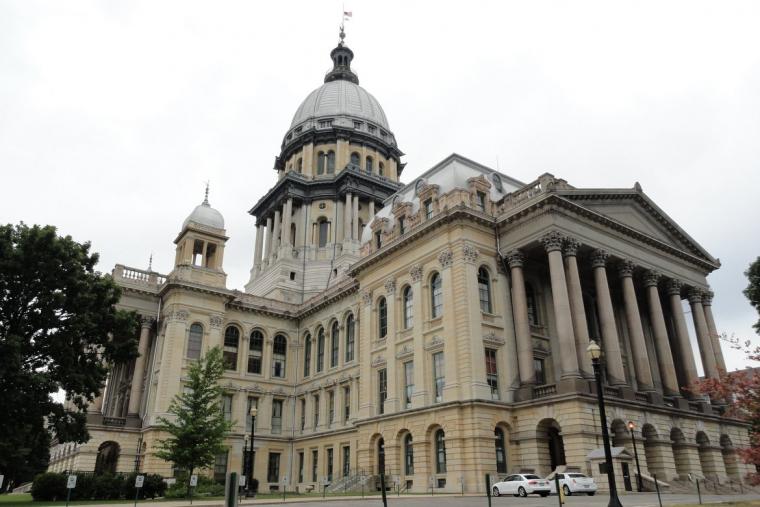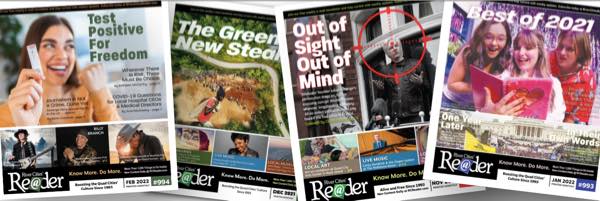
According to a recent poll, Governor Bruce Rauner is a whole lot less popular than a one-cent-per-ounce state sales tax on sugary drinks.
The poll of 800 registered voters taken February 15 through 20 for the American Heart Association found that Rauner is backed by just 32 percent against an unnamed Democrat, who would receive 47 percent. But a new penny-per-ounce tax on sugary drinks is actually supported by a majority of those polled, 56 percent, compared to 41 percent who oppose it.
“In the 2018 election for governor,” the Democratic pollster Anzalone Liszt Grove Research asked, “are you more likely to vote for the Democratic candidate or Republican Bruce Rauner?” Forty-two percent said they were more likely to vote for the unnamed Democratic candidate, and another 5 percent said they leaned that direction, for a total of 47.
And now you know why the governor deposited $50 million in his campaign fund late last year.
Rauner’s dismal rating shouldn’t be much of a surprise. He’s gone two years without many accomplishments and without passing, or even proposing, a “real” budget. The 15-point Democratic margin is about the same margin that Hillary Clinton won Illinois by just a few months ago.
However, the electorate may well feel different by the time 2018 rolls around. Also, an actual named candidate could do worse against Rauner. You can’t beat somebody with nobody.
The governor and his people have been saying for weeks that a tax on sugary drinks was only unpopular under the Statehouse dome, with lobbyists and legislators. The two Senate leaders have said there is no way they can round up enough votes to include the tax hike in their grand-bargain package. The Heart Association has been running a huge national ad campaign against sugar itself, and the issue appears to have caught fire.
The penny-per-ounce tax is backed by 62 percent of Democrats, 50 percent of Republicans, and 51 percent of independents, according to the pollster. It’s supported by 60 percent of Chicagoans, even though Cook County just instituted its own penny-per-ounce tax. Fifty-three percent of suburban residents and 51 percent of Downstaters support the tax. Fifty-four percent of whites, 54 percent of African Americans, and 71 percent of Latinos back the plan. And after being read both positive and negative statements about the penny-per-ounce sugary-drinks tax, support actually rose to 67 percent. The poll’s margin of error is 3.5 percent.
The poll also revealed that the public may be as divided about the budget as many rank-and-file lawmakers. When asked whether they preferred to continue along the same budgetary path without raising taxes, 38 percent agreed, while just 44 percent said they supported “fixing the state’s budget with tax increases as part of that fix.” Eighteen percent either didn’t know or refused to answer.
Just 4 percent said that raising taxes without spending cuts is the right way to go, while 35 percent said they prefer cutting spending with no tax hikes, and 58 percent said they favored a mix of spending cuts and tax hikes.
But not a single tax hike except the sugary-drinks tax is supported, and a look at those poll results gives you a good idea why crafting and then passing an actually balanced budget is so difficult.
For example, a plan to raise the state income tax from its current level of 3.75 percent to 4.99 percent is opposed by 66 percent, with 49 percent strongly opposed. Just 31 percent support that income-tax hike, which is the backbone of the Senate’s grand-bargain proposal. A mere 12 percent strongly support the idea.
Lowering the sales-tax rate by half a point and expanding it to food and medicine is opposed by 64 percent, while only 31 percent support it. Rauner voiced opposition to this idea during his budget address.
Asked if they supported expanding the sales tax to “include taxing services like home repairs and landscaping” – a plan long favored by the governor – 60 percent were opposed while 37 percent supported it.
The most unpopular idea tested, by far, was cutting Medicaid spending by “hundreds of millions of dollars, including coverage for low-income seniors and children.” A whopping 78 percent were opposed to that idea, including 65 percent who were strongly opposed. Only 19 percent were in favor.
Rich Miller also publishes Capitol Fax (a daily political newsletter) and CapitolFax.com.










